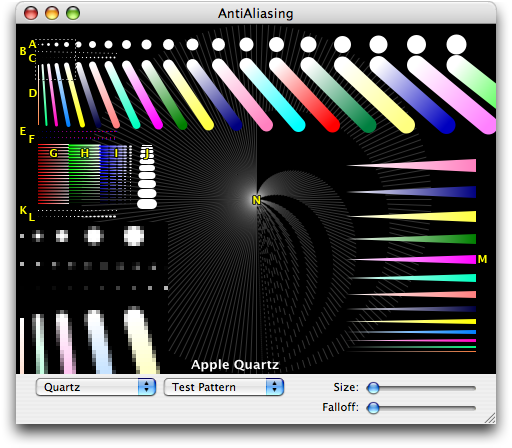Software rendererPoints looks fine, except that in test C they don't fade out quickly enough as the size goes to zero. Lines have several issues. First, the maximum line width is 10 px, fine per spec but not enough for my apps. Also, the lines are drawn as a sequence of either horizontal or vertical strips depending if the angle is less or greater than 45 degrees. This is correct according to the spec for aliased lines, but is wrong for antialiased lines, and causes several problems: in D and N, the end caps ignore the line angle, the width ignores the line angle (at 45 degrees, it is too skinny by a factor of sqrt(2)), and the stipple pattern is distorted with the angle. Next, there are two problems with line length: there is no subpixel precision, so E, F and K fail, and the length is always one pixel too long as seen in the overlap between G, H and I. It is not pictured here, but this overlap is a huge problem when drawing bezier curves. Lastly there are some diagonal artifacts in N. Triangles look OK, but there are only three subpixel bits of precision so some banding is visible. |
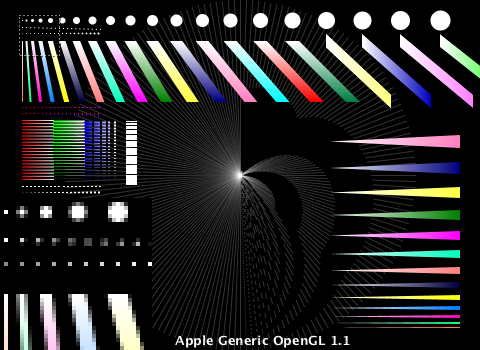 | Rage 128Points are not antialiased and appear as squares. There is no fractional size or positioning. Lines are only antialiased at a width of 1 px. The max width is reported to be 10 px, but does go wider. They have the same "wrong spec" problems as in the Software renderer. The length is correct, but there is no fractional length, width or positioning. The stipple pattern shows faint lines where there ought to be none. Triangles are not antialiased, and the alignment is a little skewed. |
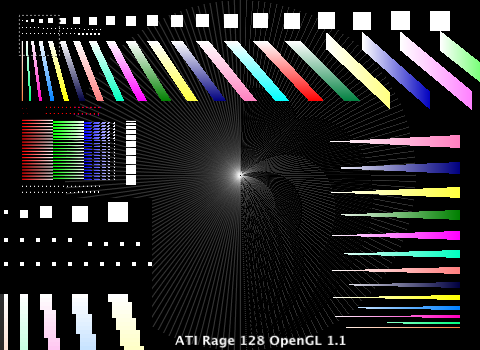 |
Rage 128 ProIdentical to Rage 128, except that the faint lines in the stipple pattern are fixed. |
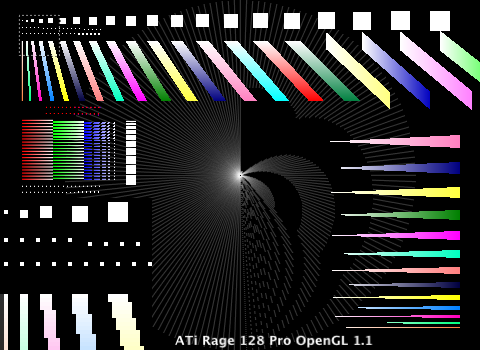 |
Radeon 7000Points are not antialiased, but show diagonal antialiasing seams. There is no fractional size or positioning. Lines are antialiased with three subpixel bits. They have the "wrong spec" end cap and stipple problems, but the width is correctly adjusted with the angle. The max width is reported to be 10 px, but does go wider. Fractional length and positioning work, but widths less than 1.0 px do not. Triangles look OK, but there are only three subpixel bits of precision so some banding is visible. |
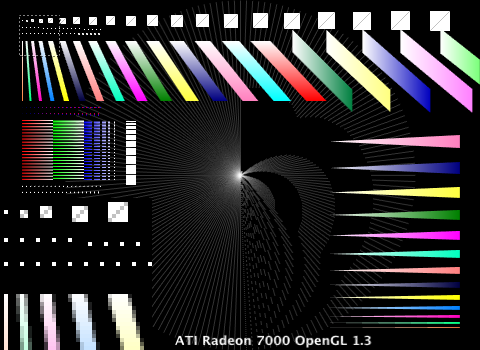 |
Radeon 7500Identical to Radeon 7000, except for slightly different blending near the center of test N. |
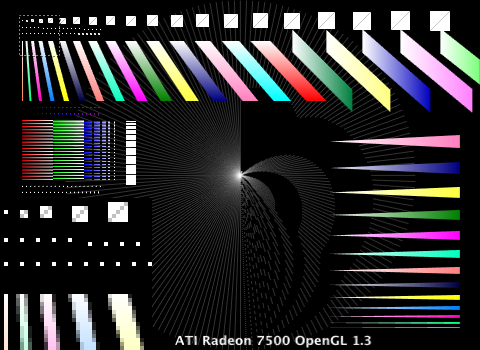 |
Radeon 8500, 9000 and 9200Identical to Radeon 7500, except for slightly different rounding in test B. Also, the stipple pattern in the zoom region box wraps correctly. |
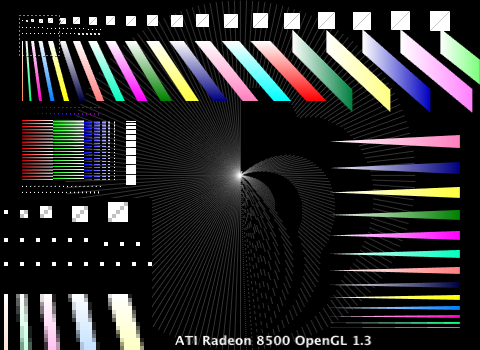 |
Radeon 9600, 9700 and 9800Points are not antialiased and appear as squares. There is no fractional size or positioning. Points smaller than 1.0 px are not drawn at all. Lines are not antialiased. They have the "wrong spec" end cap and width problems, and line stipple is ignored completely. Lines thinner than 1.0 px are not drawn at all. The max width is reported to be 10 px, but does go wider. There is no fractional length, width or positioning. Triangles are not antialiased. |
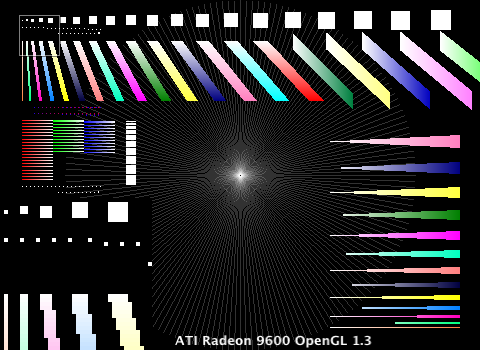 |
GeForce2 MXPoints are antialiased, but distorted at even sizes. There is no fractional size or positioning. Lines are sort of antialiased unless line stipple is on. The max width is reported to be 10 px, but actually only draws 1 px wide. There is no fractional length, width or positioning. The stipple pattern is distorted with the angle. Triangles are not antialiased. Slight skewing is visible. |
 |
GeForce4 MXPoints are antialiased, but distorted at even sizes. There is no fractional size or positioning. Lines are sort of antialiased. The max width is reported to be 10 px, but actually only draws 1 px wide. Fractional length and positioning work, but fractional width only works if line stipple is on. With line stipple off, lines thinner than 1.0 px are smudged. The stipple pattern is distorted with the angle. Triangles look OK, but there are only three subpixel bits of precision so some banding is visible. |
 |
GeForce4 TiPoints are antialiased, but distorted at even sizes. Fractional size or positioning tends to make the point not be drawn at all. Lines are antialiased and drawn according to the antialiased spec, so the end caps adjust to the angle correctly. The width also adjusts but overcompensates so angled lines are a little wider than they should be. The stipple pattern is still distorted with the angle. Fractional length, width, and positioning all work. Triangles are antialiased with only 1 subpixel bit, so there is very noticeable banding. |
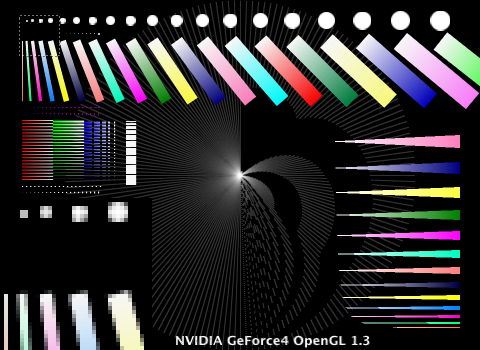 |
GeForceFX 5200Identical to GeForce4 Ti, except that there is no fractional point size or positioning, and line width and stipple pattern correctly adjust with the angle. |
 |
